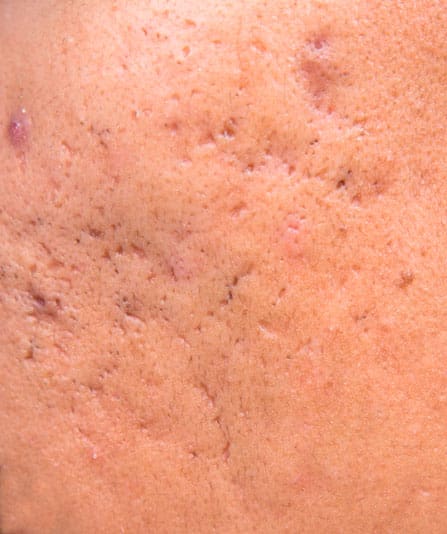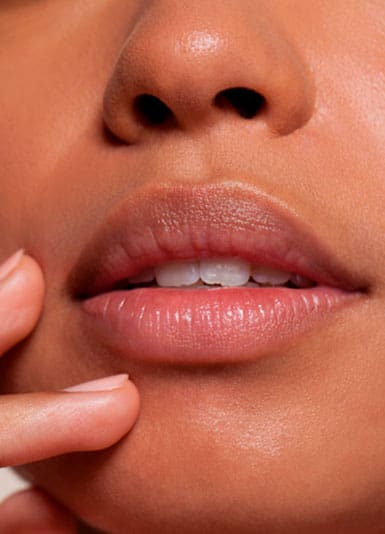Scars by Mr Ioannis Goutos
Pitted Scars

Scarring can occur as a result of wounds, burns, infection or inflammation in the skin. Pitted scars refer to small, indented scars that appear like depressed spots within the skin. These are typically formed in response to previous chicken pox or moderate to severe acne. Pitted scarring can occur anywhere that the original skin condition was. For example, pitted scarring caused by a chicken pox infection can arise anywhere on the body, whereas scarring related to acne is more common on the face and upper chest and back.
This type of scarring arises as there is insufficient production of the connective tissue, collagen, within the area of healing skin following injury. This means that the healed skin does not have enough volume to become level with the adjacent skin. Sometimes pitted scarring can also be lighter or darker than the surrounding skin due to irregular production of pigment within the healed scar.
Unfortunately, although the original infection or acne may be cleared and no longer active, the residual pitted scarring can cause individuals to feel self-conscious, and put limitations on their choice of clothing or activities. Early and effective treatment of acne can help to reduce the occurrence of troublesome scarring. However, there are also a number of treatments and procedures that aim to reduce the appearance of pitted scars and help the skin look smoother and more even.
Mr Ioannis Goutos is a top, London-based plastic surgeon, with a special interest and expertise in treating individuals with scars and burns. He is well known as a leading academic and clinician in the field of scar and burn management, and is able to offer a wide array of services. These include initial consultations and assessments, a variety of surgical and non-surgical procedures and gold-standard post-operative care.
Book your consultation today
Book nowAbout this condition
The most effective treatment for pitted scarring lies in its prevention and good general skin care. In the case of chicken pox, it is crucial to avoid picking or scratching at any spots to avoid additional trauma to the skin. Regular moisturisation with neutral products, or soothing lotions, can help to maintain the skin’s integrity, reduce irritation and itching and promote good skin healing. For those who are prone to developing acne, it can be helpful to ensure regular skin cleansing and moisturisation. In cases of moderate to severe acne, medications or creams prescribed by a GP or dermatologist can help to prevent severe spots or cysts from developing. In the incidence of acne, it is recommended not to pop or squeeze the spots as this can lead to further trauma and increased chances of scarring.
If you are seeking treatment for established pitted scars, it is crucial that any active acne or infection is fully resolved, as many treatments can cause further irritation to active lesions and increase the likelihood and severity of scarring later on.
Procedures that aim to improve the appearance of pitted scars generally work by targeting the areas of scarring and stimulating the cells to regenerate and produce more collagen. This can help the depressed areas of skin fill out and become more level with the surrounding skin. These treatments also help the skin to appear smoother and rejuvenated. Techniques to treat pitted scarring include:
- Needling or ‘microneedling’
- Laser treatments
- Filler injections
In certain cases, small surgical procedures, such as subcision, which involve freeing deeper attachments in the areas of scarring to break down the can also be utilised.

Testimonials
Mr Goutos is delighted to share some of his patient and peer feedback on their experiences of his services.











